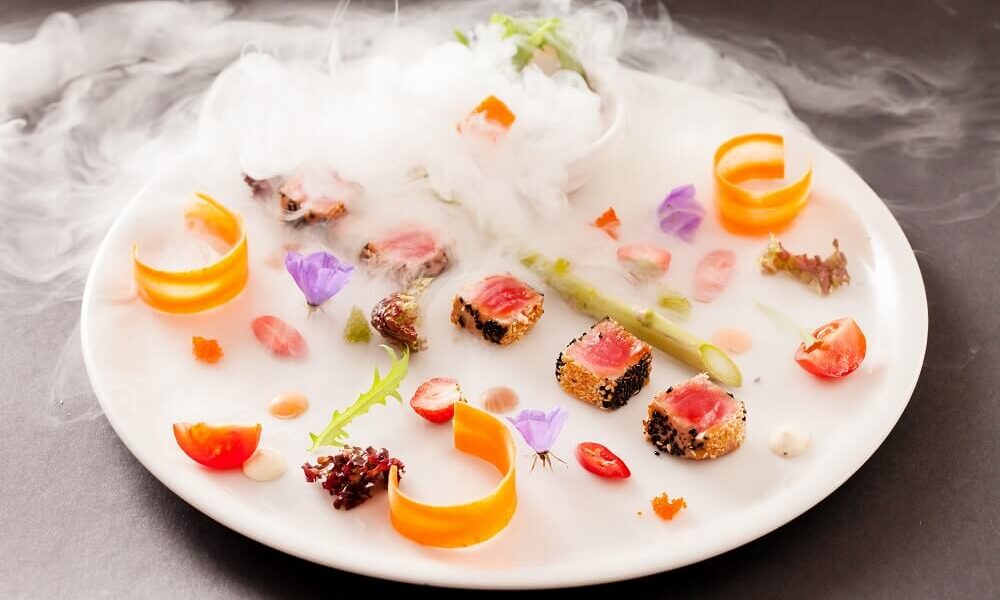Today, we will embark on a culinary journey into the mysterious realm of alchemy and how it intertwines with our modern culinary practices. The art of transforming ordinary ingredients into something extraordinary and delicious has captivated chefs, cooks, and food enthusiasts alike for centuries. Let’s delve into this mystical world of culinary alchemy and unlock the secrets of tantalizing taste buds.
A Brief History of Alchemy
Table of Contents
Alchemy, a precursor to modern chemistry, dates back to ancient times, with roots in Hellenistic Egypt and China. The art of alchemy was not just about the pursuit of creating gold from base metals but also focused on developing medicinal potions and elixirs to heal and rejuvenate the body.
Fast forward to the present day, and you will find that the principles of alchemy are alive and well in our kitchens. We might not be striving for immortality or turning lead into gold, but we are continually experimenting with ingredients to produce innovative and delicious dishes.
The Alchemy of Flavors
In our quest for new flavors, we’ve discovered that even seemingly simple ingredients can be transformed into extraordinary culinary delights with the right combination and techniques. For instance, fermentation, a process that has been practiced for thousands of years, allows us to transform basic ingredients like cabbage into a completely different and flavorful product, like sauerkraut or kimchi.
However, the journey does not end with fermentation. By using specific ingredients, we can tap into their alchemical properties to create mouth-watering meals. For example, who knew that combining some greens, fruits, and other natural ingredients could result in a delicious weight-loss smoothie that aids in shedding those extra pounds in just a few weeks?
To further explore the alchemical magic of flavors, we will now unveil two ancient, mystical ingredients that continue to bewitch the culinary world today.
Dragon’s Breath Chili
This exceptionally hot chili pepper, also known as Bhut Jolokia, is believed to have originated in Northeast India. With a Scoville rating of over one million units, it was once considered the hottest chili in the world. When used sparingly, this fiery pepper can add an intense and magical kick to any dish.
The Enigmatic Saffron
Saffron, the world’s most expensive spice, is derived from the Crocus sativus flower. Its history can be traced back over 3,000 years and has been revered for its medicinal properties, aphrodisiac qualities, and, of course, its unique flavor and aroma. Its enigmatic nature and rarity have made saffron a sought-after ingredient in both traditional and modern cuisines.
Modern Culinary Alchemy: Molecular Gastronomy
Molecular gastronomy, a subdiscipline of food science, applies the principles of alchemy in the pursuit of new and exciting culinary experiences. By manipulating the physical and chemical properties of ingredients, molecular gastronomy aims to create innovative dishes that challenge and excite the senses. Restaurants like Alinea in Chicago and El Bulli in Spain have gained international acclaim for their inventive and
experimental approach to food.
Molecular gastronomy techniques such as spherification, sous vide, and the use of liquid nitrogen have become more mainstream, with many home cooks experimenting with these methods to elevate their everyday meals. By exploring the scientific principles behind cooking, we can unlock a whole new world of taste sensations and presentation possibilities.
The Magic of Food Pairings
Unconventional and surprising food pairings have been captivating the taste buds of culinary adventurers for years. Just like the alchemists of old, modern chefs are constantly seeking out new and magical combinations of flavors, textures, and aromas.
For instance, who would have thought that the combination of chocolate and chili would create such an explosive taste sensation? Or that strawberries and balsamic vinegar would pair so harmoniously? By daring to mix and match unusual ingredients, we can discover enchanting and unexpected taste experiences.
The Culinary Alchemist’s Toolkit
Whether you are a professional chef or a home cook, having the right tools and ingredients at your disposal can help you unleash your inner culinary alchemist. Here are some essentials to have in your alchemical kitchen:
- A well-stocked spice rack: A diverse range of spices allows you to explore different flavor profiles and create magical dishes from around the world.
- A good set of knives: Sharp, high-quality knives make preparing ingredients easier and more precise.
- High-quality cookware: Investing in durable and efficient cookware ensures consistent results and better heat distribution.
- A kitchen scale: Accurate measurements are crucial in achieving the perfect balance of flavors and textures.
- An adventurous spirit: Be bold and unafraid to experiment with new techniques, flavors, and combinations.
In conclusion, the spirit of alchemy is very much alive in the culinary world today. By tapping into the mystical power of ingredients, techniques, and combinations, we can transform simple ingredients into something extraordinary and delightful. As you continue your journey through the enchanting world of culinary alchemy, remember to keep an open mind and an adventurous palate. Who knows what magical creations you might discover along the way?
So, the next time you step into your kitchen, embrace your inner culinary alchemist and allow the secrets of the past to guide you towards a future of innovative and delicious dishes.



